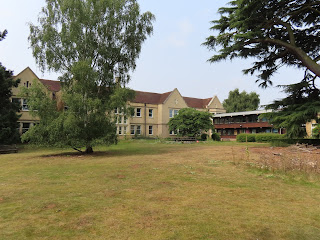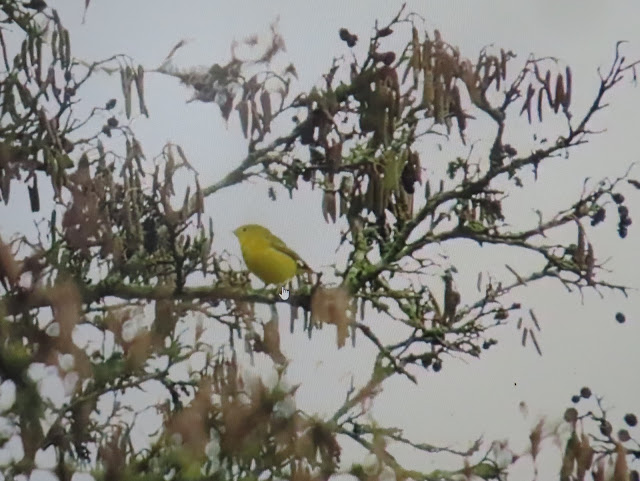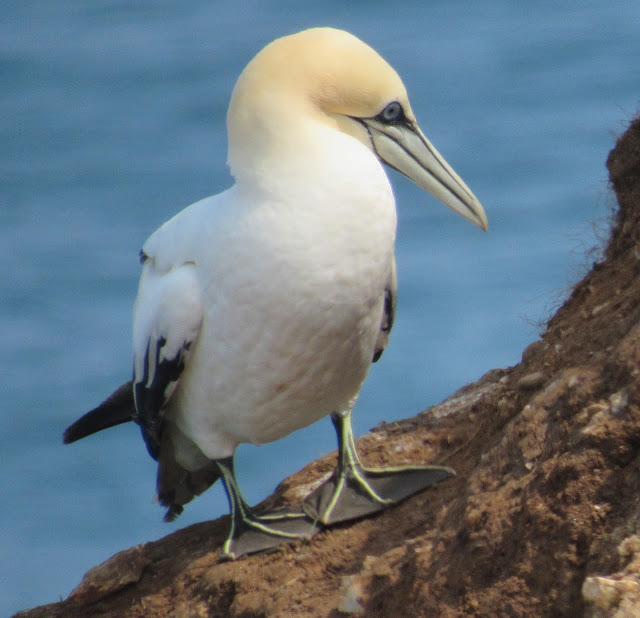.JPG) |
| Four of Britain's ten confirmed Yellow Warbler sightings have been on Shetland |
THE end-of-year reappearance of the much-twitched American Yellow Warbler in Kent provides an opportunity to reconsider a 'record' of the same species that was reported to have been found dead in Durham way back in May 1904.
The location was on Shotley Bridge Road near Axwell Park which is now a housing estate.
Because the bird had a broken leg, the speculation was that it might have been in flight-collision with an overhead telegraph wire.
A report that appeared in newspapers of March the following year states: "At the last meeting of the British Ornithologists' Club, Mr E. Bidwell exhibited a specimen of the North American Yellow Warbler which was picked up near Axwell Park in May, 1904.
"It was seen in the flesh, when when quite recently dead, by Mr John Walker, a Bladen bird-stuffer, to whom the bird had been taken for preservation by the boy who found it.
"Considerable doubt was expressed as to whether the bird was a genuine migrant.
"The Hon Walter Rothschild being seemed to think that it had been 'assisted' from its North American home while Mr Howard Saunders was of the opinion that it had escaped from a cage.
"Mr D. Smeth-Smith, however, did not know of any of this species having been brought to this country as a cage bird, and Dr. Sclater saw no reason why the bird should not reach England as an occasional visitor."
The report continues: "On the western prairies farms the boys call it the 'wild canary', and it is said to court the acquaintance of man by frequenting roadside thickets, weed edges, orchards and gardens.
"Mr. W.T. Hornaday, in his American Natural History says: 'The beauty of this bird far surpasses its minstrelsy for it is but an indifferent singer.
'The fact is, however, that it has so much work to do in catching insects that it little time for music.'
'Mrs, Mabel Osgood Wright adds that it is one of the particular victims which the Cowbird selects to foster its random eggs.
'However, the warbler puts its intelligence effectively to work and sometimes builds a floor over the unwelcome egg.'"
Either because it was dead and/or for other reasons, this bird has never been officially recognised. Its stuffed corpse was last reported to be held by the Hancock Museum in Newcastle-upon-Tyne.
That means the honour of discovering Britain's first 'official' Yellow Warbler falls to H. Wells who made its acquaintance on Bardsey Island off the Welsh Coast in the most unusual of circumstances - as here described by George Evans, the observatory warden in his a report that appeared in British Birds journal of November 1965.
"On August 29, 1964, at approximately 15.30 hours GMT, my newly arrived assistant, H. Miles, was conveying his belongings from the boathouse to the observatory on Bardsey Island, Caernarvonshire.
"Halfway between the boathouse and Ty Pellaf, his attention was attracted by a small, bright yellow, warbler-like bird which appeared suddenly and briefly atop a hedgerow at close range.
"Only very general impressions were obtained, but the sheer vividness of its coloration rendered it quite unlike any species with which he was familiar.
"In his encumbered state, and lacking binoculars, H.M. made no attempt to pursue it.
"Though puzzled by its identity, he assumed it was probably a variant Willow Warbler.
"Some two hours later a small party of visitors led by R. F. Durman left the observatory to undertake a short spell of mist-netting before the day's light faded
"A net sited in Cristin withy bed was duly erected and the surrounding area driven.
" During this drive R.F.D. observed what was manifestly the same bird seen by H.M. earlier in the day. I was summoned and obtained good, if fleeting, views with comparative ease.
"My first response was one of incredulity. Though palpably of warbler species, it possessed a vivid coloration quite different from anything I had seen before - the entire head, breast, belly and vent being a pure primrose-yellow. . . ."
It was more than a quarter of a century before the next Yellow Warbler was recorded in Britain - at Helendale, Shetland on November 3-4, 1990.
Subsequent records have been as follows:
* 1992 (August 24): North Ronaldsay, Orkney
* 2004 (October 2-7): Barra, Outer Hebrides
* 2005 (September 15-17): Garths Ness, Quendale, Shetland
* 2017 (August 21): Culverwell, Portland, Dorset
* 2023 (September 5-11): Ham, Foula Shetland
* 2023 (September 30 - October 3): Kilmoluaig, Loch Bhasapol, Tiree, Argyll
* 2023 (October 12- 2): Hoswick, Shetland
* 2024 (From December 24): New Hythe, Kent
After showing between December 24 and December 27, the Christmas 2024 Kent bird went awol for most, if not, all of December 28-30, then reappeared today.
Hopes are high, therefore, that it will stay - and be visible - into 2025.























.JPG)



